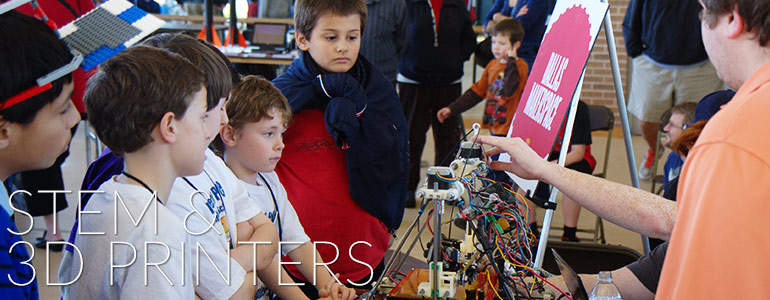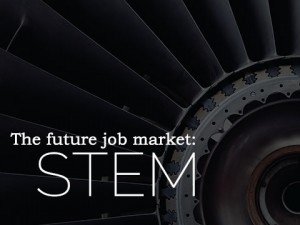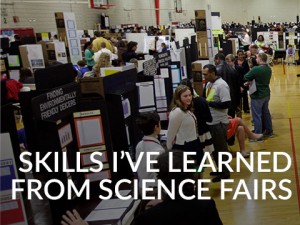
With its decreasing price and improved usability, 3D printing is becoming more accessible to everyday folks. Although you may not find one in your average home office, 3D printers are easily found on a college campus and several public libraries. We’ve heard extensively how college students are using 3D printers to learn more effectively, such as by creating anatomical models, engineering parts, product design prototypes or architectural models. But how are elementary and middle schools using 3D printers?
Several people disregard a career or major in engineering, because they feel inexperienced or inadequate in their science or math skills. Some schools are trying to combat this mentality by engaging students in engineering and design principles at an early age.
Middle school students in West Hartford, Connecticut learned how to use a 3D printer to make replacement parts for broken items at school. A Chicago magnet elementary school wants to use their printer to make objects that help blind students learn Braille. Buford Middle School science students used their printer to help make sound speakers.
But perhaps more important than the specific projects these schools are implementing is the common outcome of making young students identify as creative problem solvers and engineers. With a 3D printer, students create a design, and then get to quickly see the product in their hands. If it doesn’t turn out to be a success, they can tweak their design and redo it. The redoing is key; at this step, kids see the importance of overcoming obstacles and figure out problem-solving strategies.
The spread of 3D printing into a diverse range of industries suggests that it will become an essential skill in the future workplace. By introducing 3D printing to students early, not only are we giving them the confidence to aptly face challenges and consider engineering careers, but we are also providing them with skills and experience sought after in the workplace.
Obstacles to Implementing 3D Printers
Of course, if it was that simple why doesn’t every school have a 3D printer?
Common Core and Relevancy to Education Standards
The emphasis on Common Core gives priority to reading and math skills in elementary school. It is difficult to place 3D printing lessons in the context of Common Core goals, especially because specific science standards do not begin until grade 6. However, 3D printing does fit with larger education goals of improving digital literacy, teaching relevant skills for students’ future beyond school, and it encourages pursuit of highly sought STEM careers.
Lack of Confidence in Technical Knowledge of 3D Printing
3D printing, although a technology that has been in the works for over 20 years, has only just recently emerged in the forefront and is perceived as an experimental, new technology. It is an intimidating technology to take on as a school and few technology specialists can claim incredible expertise with 3D printing. However, it is not necessary to know everything about 3D printing to successfully implement it. To support 3D printing, it is most important to just know where to find the answers to your questions and understand how to take advantage of the information resources available.
Also, 3D printing is becoming more and more user-accessible. With entry-level, free design software like TinkerCad and 123D Design, even young elementary school students have no problem learning how to 3D model. 3D printers have also become more sophisticated, requiring less work on the front-end to successfully print a design.
However, 3D printers are still daunting and a noticeably imperfect technology. 3D printers can be especially finicky creatures, often requiring troubleshooting and fixing of broken parts. Luckily, the support community for 3D printers is incredibly large and helpful. Working with a 3D printer does require patience and a willingness to learn and seek help resources.
Price of a 3D Printer
Although 3D printers have significantly decreased in price, from $20,000 price tags to $2,000-$3,000 for a highly effective printer and less than $1,000 for those on a tight budget, the printer plus the maintenance still makes it a significant purchase for a school.
Some teachers have bypassed the school budget by using DonorsChoose, a fundraising tool for teachers. MakerBot, a 3D printer manufacturer whose mission is to get every school in the US to have a 3D printer, has used DonorsChoose to help teachers get a MakerBot Academy bundle.
For now, 3D printers in early education is mostly concentrated in innovative schools, but the solvable obstacles to implementation can be overcome with time as its technology progresses and as we begin to realize the value of 3D printing as a skill and source of early engineering inspiration.
Picture from Flickr







